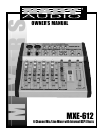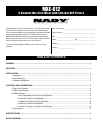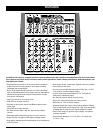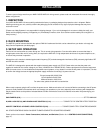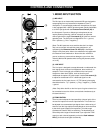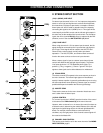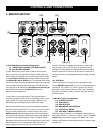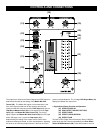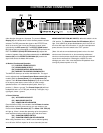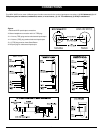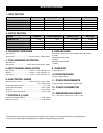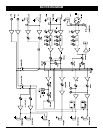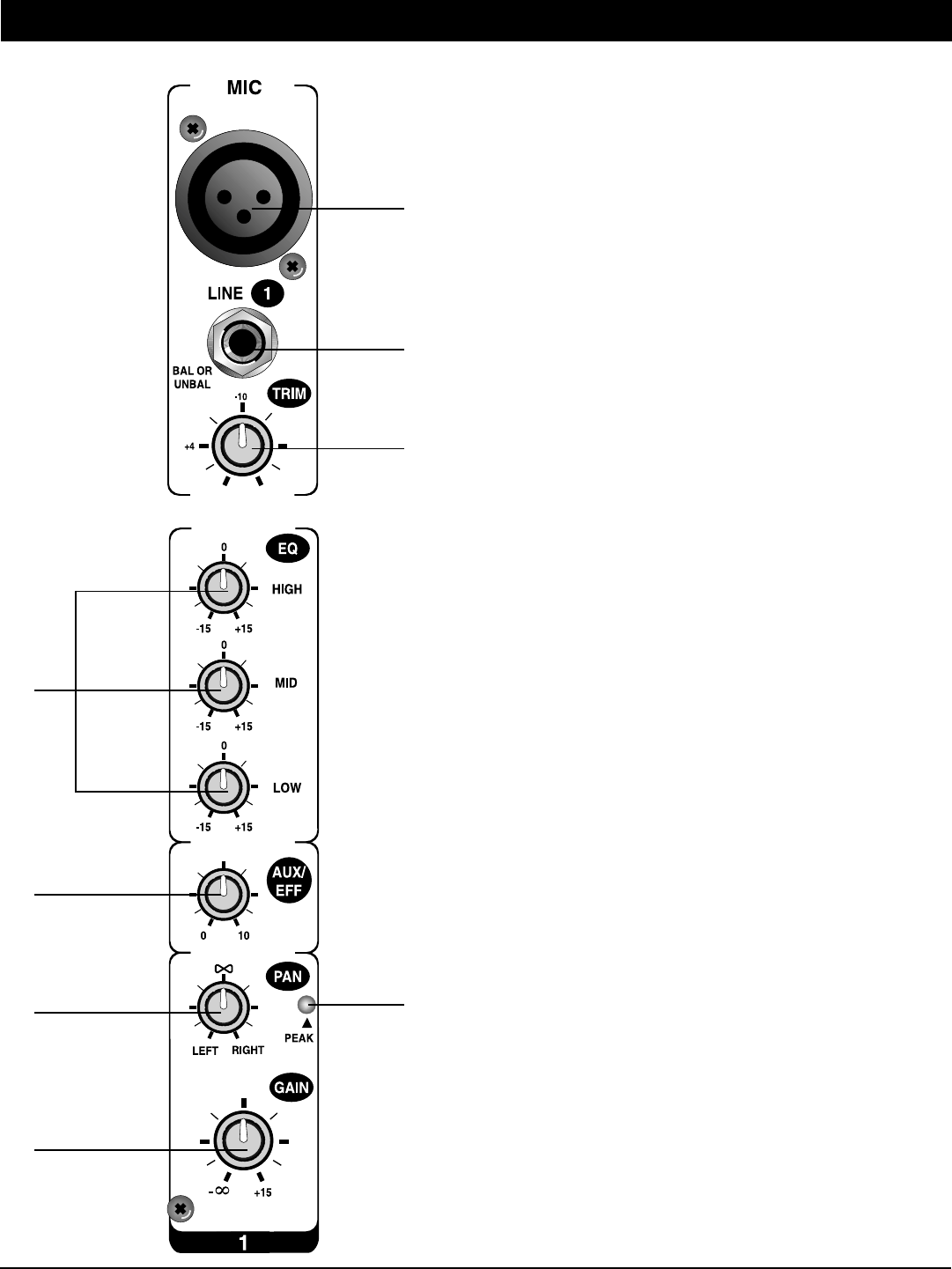
CONTROLS AND CONNECTIONS
6
(1)
(2)
(3)
(4)
(5)
(6)
(7)
(8)
1. MONO INPUT SECTION
(1) MIC INPUT
The Mic input is an electronically balanced XLR type designed to
accept signals from any balanced low impedance (Low Z)
microphone. To accommodate condenser microphones, this input
is also equipped with +48VDC phantom power globally switchable
to all XLR input jacks with the Phantom Power switch (22) on
the front panel. Dynamic or ribbon-type microphones do not
require phantom powering. It will be necessary to adjust the
channel gain with the input Trim control (3) to achieve a nominal
operating level. The XLR jack is configured for: Pin1 = ground,
Pin2 = positive (+), Pin3 = negative (-).
[Note: The Mic inputs are more sensitive than the Line inputs.
Also, do not connect mics with the power switched on, as
indicated by the Phantom Power On LED (25) in the Master
Section of the front panel. Never use unbalanced mic cables with
the Phantom Power switched on. Never short the +48VDC to
ground, as that can cause serious damage to your mixer. Also,
mute the Monitor/PA speakers when turning the phantom power
on or off.]
(2) LINE INPUT
The Line input is designed to accept balanced or unbalanced line-
level signals such as those from keyboards, drum machines, or
samplers. There is enough gain available on the line input to
accept even lower level signals, such as those from an
unbalanced microphone or guitar output. Use the Trim control (3)
to adjust for the desired level. If a balanced signal is to be
connected to the line input, then a 1/4" TRS (stereo) phone plug
should be wired for: Tip = positive (+), Ring = negative (-), Sleeve
= ground.
(Note: Only either the Mic or the Line input of a given channel can
be connected at one time. Never connect both simultaneously to
the same channel.)
(3) TRIM CONTROL
The trim control adjusts the input sensitivity (channel gain) of the
mic and line inputs on the mono input channels. This control can
be adjusted to accommodate input signals from a wide variety of
sources, from the high outputs from keyboards or drum machines
to the small signal outputs of microphones. This wide range
eliminates the need for Mic/Line switching. The best balance of
S/N and dynamic range will be achieved if you adjust the TRIM
control on each channel separately so that the Peak Indicator
LED (7) for that channel lights occasionally.



